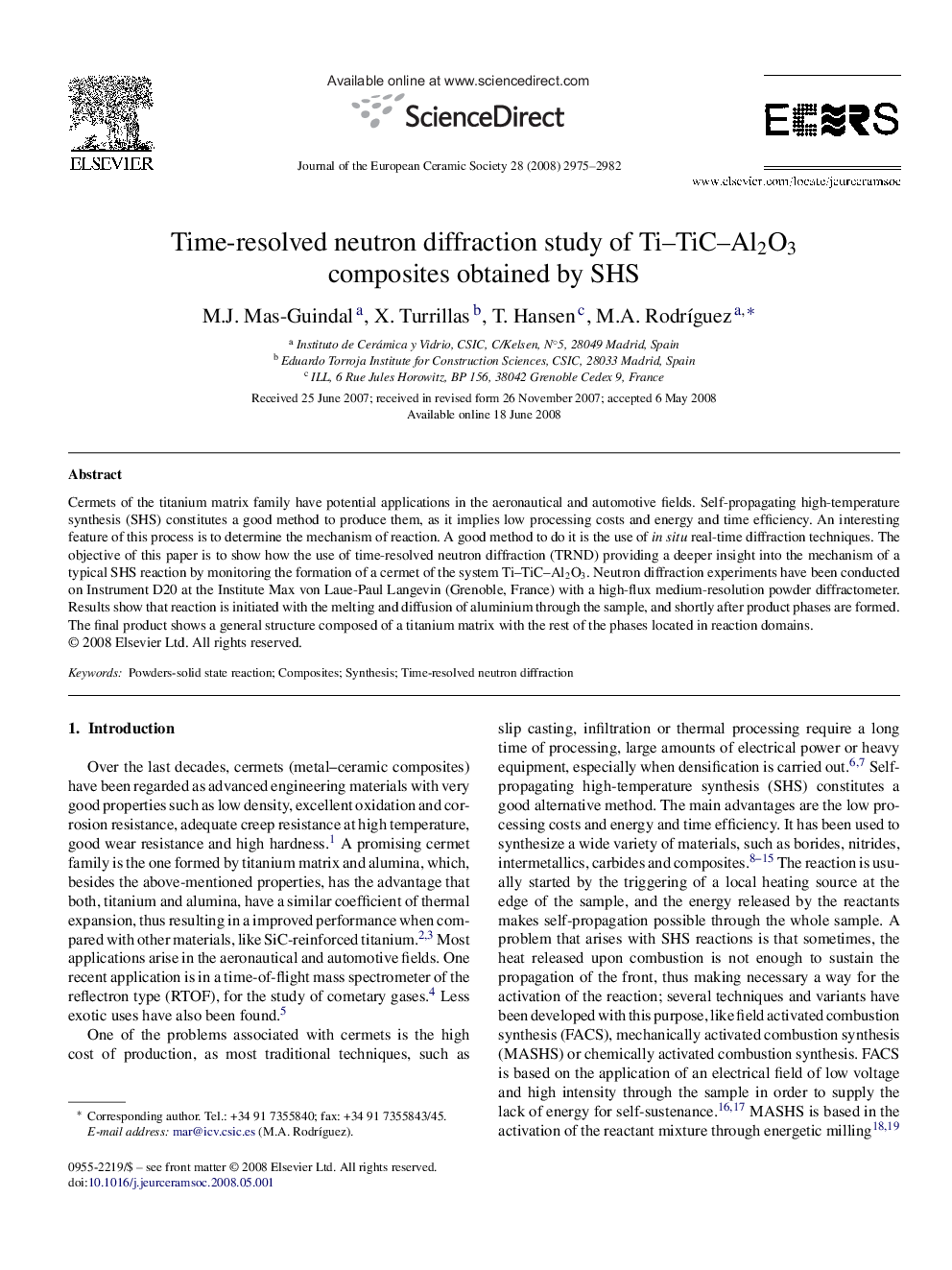| کد مقاله | کد نشریه | سال انتشار | مقاله انگلیسی | نسخه تمام متن |
|---|---|---|---|---|
| 1477646 | 991191 | 2008 | 8 صفحه PDF | دانلود رایگان |

Cermets of the titanium matrix family have potential applications in the aeronautical and automotive fields. Self-propagating high-temperature synthesis (SHS) constitutes a good method to produce them, as it implies low processing costs and energy and time efficiency. An interesting feature of this process is to determine the mechanism of reaction. A good method to do it is the use of in situ real-time diffraction techniques. The objective of this paper is to show how the use of time-resolved neutron diffraction (TRND) providing a deeper insight into the mechanism of a typical SHS reaction by monitoring the formation of a cermet of the system Ti–TiC–Al2O3. Neutron diffraction experiments have been conducted on Instrument D20 at the Institute Max von Laue-Paul Langevin (Grenoble, France) with a high-flux medium-resolution powder diffractometer. Results show that reaction is initiated with the melting and diffusion of aluminium through the sample, and shortly after product phases are formed. The final product shows a general structure composed of a titanium matrix with the rest of the phases located in reaction domains.
Journal: Journal of the European Ceramic Society - Volume 28, Issue 15, November 2008, Pages 2975–2982